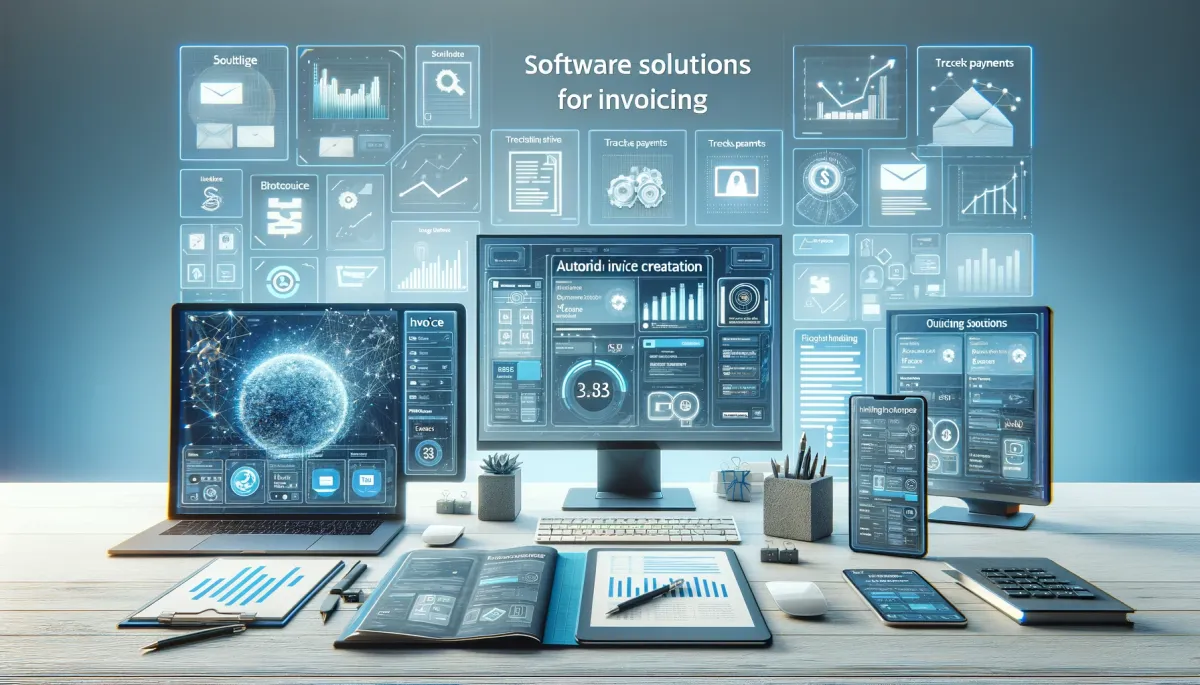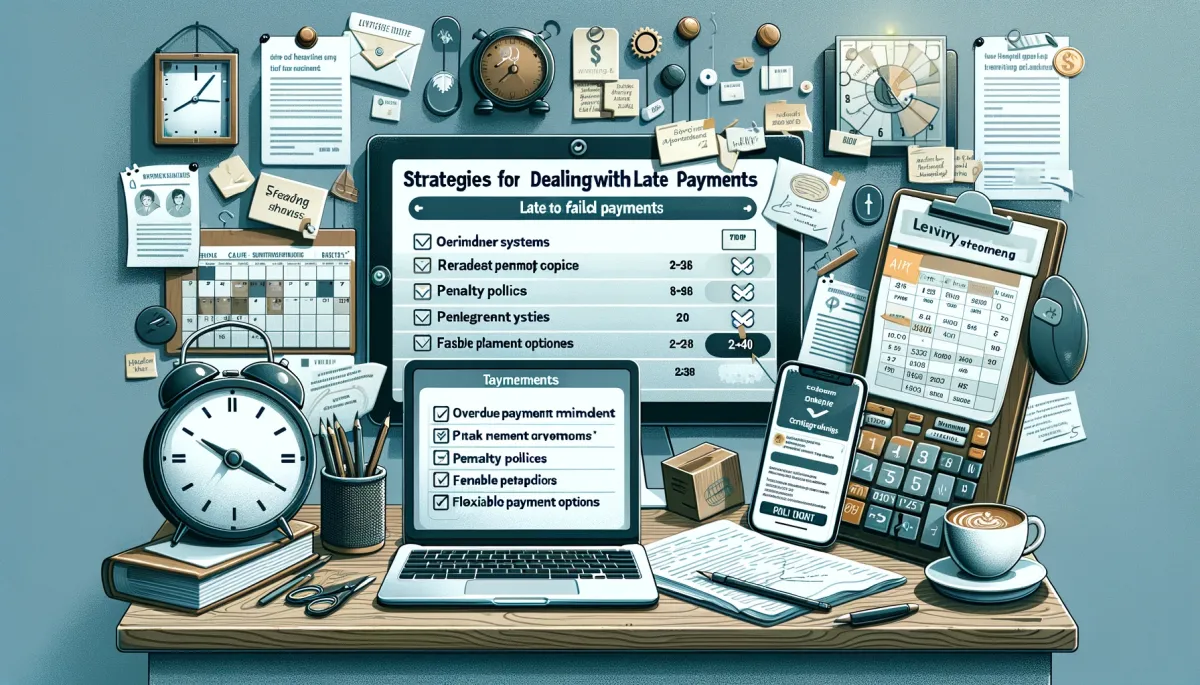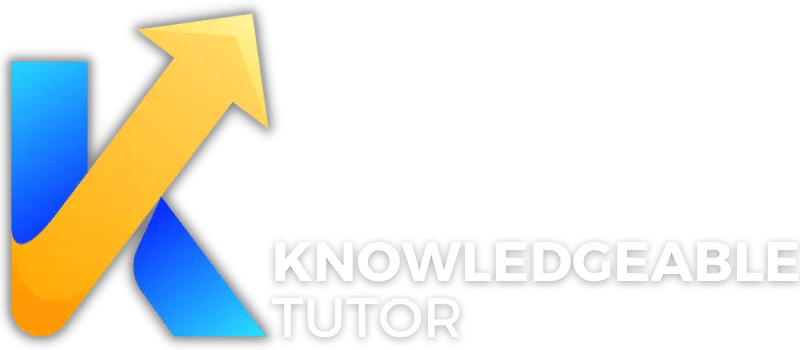How to Handle Payment and Invoicing for Your Tutoring Services

Fanie Naude
CEO & Founder of Knowledgeable Tutor, Buznet Direct, YMC & Naude Consulting

Fanie Naude
CEO & Founder of Knowledgeable Tutor, Buznet Direct, YMC & Naude Consulting

Introduction
Welcome to this comprehensive guide on "How to Handle Payment and Invoicing for Your Tutoring Services." In the digital age, where online tutoring is not just an option but a necessity, understanding the intricacies of payment and invoicing is crucial. As the famous saying by Warren Buffet goes, "Price is what you pay; value is what you get." This article aims to provide you with valuable insights into setting up a seamless payment and invoicing system for your online tutoring business.
The article is designed to be a one-stop-shop for tutors and educators who are either venturing into the online tutoring space or looking to optimize their existing payment and invoicing systems. We will delve into various aspects, from choosing the right payment gateway to ethical considerations, ensuring that you are well-equipped to manage this critical business operation.

Types of Payment Methods
Overview of Various Payment Methods
In the realm of online tutoring, flexibility is key, especially when it comes to payment methods. Offering a variety of payment options not only enhances the customer experience but also increases the likelihood of timely payments. As Albert Einstein once said, "The measure of intelligence is the ability to change." Adaptability in payment methods can indeed be a marker of a business's intelligence.
Bank Transfers
- Pros: Secure, direct, and often preferred for large sums.
- Cons: May involve processing time and fees.
Digital Wallets (e.g., PayPal, Venmo)
- Pros: Quick and convenient, especially for small amounts.
- Cons: May involve transaction fees and not universally accepted.
Credit/Debit Cards
- Pros: Widely used and accepted, convenient for recurring payments.
- Cons: Risk of fraud, and some cards may have international usage restrictions.
Cryptocurrency
- Pros: Emerging trend, low transaction fees.
- Cons: Volatile, not widely accepted.
Checks
- Pros: Traditional and straightforward.
- Cons: Risk of bouncing, slow to process.
According to a report by Mordor Intelligence, the digital wallet market is expected to grow at a CAGR of 15.2% between 2021 and 2026. This indicates a shifting preference towards digital payment methods.
For more insights on how to integrate these payment methods into your tutoring business, refer to our guide on Building Your Online Tutoring Business: Tips and Strategies.

Choosing the Right Payment Gateway
Factors to Consider When Selecting a Payment Gateway
Choosing the right payment gateway is akin to choosing the right vehicle for a journey. The wrong choice can lead to bumps along the way, affecting both your revenue and reputation. "It's not the strongest or the most intelligent who will survive but those who can best manage change," said Charles Darwin. In the ever-evolving landscape of online payments, this couldn't be more accurate.
Security
- SSL Certification: Ensure the gateway complies with security standards.
- Fraud Detection: Features like two-factor authentication can be a boon.
User Experience
- Ease of Use: A complicated gateway can deter clients.
- Mobile Responsiveness: With the rise in mobile transactions, this is a must.
Fees and Charges
- Transaction Fees: These can eat into your profits if not accounted for.
- Monthly/Annual Fees: Some gateways charge recurring fees.
Integration
- Compatibility: Ensure the gateway integrates well with your website or app.
- API Availability: For custom integrations.
Customer Support
- Availability: 24/7 support can be crucial for resolving issues.
- Quality: Look for reviews or testimonials about the support service.
Currency Support
- Multi-Currency: Important if you have an international client base.
According to a study by Grand View Research, the global payment gateway market size was valued at USD 17.2 billion in 2020 and is expected to expand at a compound annual growth rate (CAGR) of 21.7% from 2021 to 2028. This underlines the importance of choosing a gateway that is not just functional but also future-proof.
For a deeper dive into the technical aspects of setting up a payment gateway, you may find our article on Tools and Technology for Effective Online Tutoring useful.
Both sections aim to provide a comprehensive understanding of the types of payment methods available and the critical factors to consider when choosing a payment gateway. The goal is to equip you with the knowledge to make informed decisions that will benefit both you and your clients in the long run.

Why Payment and Invoicing Matter
The Role of a Streamlined Payment Process in Enhancing Your Tutoring Business
In the world of online tutoring, a streamlined payment process is not just a convenience but a necessity. It's the backbone of your business operations, affecting not only your cash flow but also your reputation. A smooth payment process enhances the client's trust and ensures that you, as a tutor, can focus on what you do best—teaching.
Importance of Timely Payments
- Cash Flow: Timely payments ensure a healthy cash flow, enabling you to invest in resources like advanced teaching tools or marketing strategies.
- Client Trust: A hassle-free payment process enhances client trust, which is crucial for long-term relationships.
- Focus on Core Activities: With a reliable payment system, you can focus more on teaching and less on administrative tasks.
The Psychological Aspect
The psychology of payment also plays a role in how your services are perceived. According to a study by the Journal of Consumer Research, the pain of paying impacts the enjoyment of services. A complicated payment process can, therefore, affect how your tutoring services are received.
The Role of Invoicing
Invoicing, while often overlooked, is equally vital. It's not just a bill but a legal document that can serve as a record for both you and your client. Proper invoicing ensures transparency and can be crucial in case of any financial discrepancies.
Elements of a Good Invoice
- Detailed Breakdown: A good invoice provides a detailed breakdown of the services offered, making it easier for clients to understand what they are paying for.
- Legal Requirements: Invoices often need to meet specific legal requirements, such as tax identification numbers, to be valid.
- Professionalism: A well-structured invoice reflects your professionalism, further building client trust.
Invoicing Software
The market is flooded with invoicing software that automates this process, making it efficient and error-free. According to a report by Arizton, the global invoicing software market is expected to reach $20 billion by 2026, indicating its growing importance.
In conclusion, both payment and invoicing are integral parts of your online tutoring business that require careful planning and execution. They are not just administrative tasks but tools that can significantly impact your business growth and client relationships. As the saying goes, "The devil is in the details," and these details can make or break your online tutoring venture.

Structuring Your Invoice
Essential Elements That Should Be Included in an Invoice
Invoicing is more than just sending a bill; it's about creating a document that is clear, compliant, and professional. As Leonardo da Vinci once said, "Simplicity is the ultimate sophistication." A well-structured invoice embodies this principle by being straightforward yet comprehensive.
Header Information
- Your Business Details: Include your name, address, and contact information.
- Client's Details: Name, address, and contact information of the student or parent.
Invoice Number and Date
- Unique Invoice Number: For tracking and record-keeping.
- Date: The date the invoice is issued and the due date for payment.
Itemized List of Services
- Description: A detailed list of the tutoring services provided.
- Quantity and Rate: Number of hours and the rate per hour.
Taxes and Additional Charges
- Tax Information: If applicable, include tax identification numbers and the tax rate.
- Additional Charges: Such as late fees or material costs.
Payment Terms
- Payment Methods: Specify acceptable payment methods.
- Late Payment Policy: Clearly outline any penalties for late payments.
According to a survey by FreshBooks, 27% of self-employed professionals say invoicing is an administrative task they struggle with. Structured invoicing can alleviate this pain point.
For more on how to price your services, which directly impacts invoicing, you may refer to our guide on Online Tutoring Rates: How to Price Your Services.

Automated vs. Manual Invoicing
Pros and Cons of Automated and Manual Invoicing Systems
The debate between automated and manual invoicing is akin to the classic battle between tradition and technology. As Steve Jobs aptly put it, "Innovation distinguishes between a leader and a follower." The choice between automated and manual invoicing systems can indeed set you apart in the competitive world of online tutoring.
Automated Invoicing
- Pros:
- Time-efficient
- Minimizes errors
- Easy tracking and record-keeping
- Cons:
- Initial setup cost
- Learning curve for software
Manual Invoicing
- Pros:
- No setup cost
- Full control over invoice design
- Cons:
- Time-consuming
- Prone to errors
- Difficult to manage as business scales
According to a report by PayStream Advisors, 39% of businesses are looking to automate invoice receipt and workflow processes, indicating a trend towards automation.
For a comprehensive look at the tools that can help you with automated invoicing, you might find our article on Tools and Technology for Effective Online Tutoring to be a valuable resource.
Both sections aim to guide you through the intricacies of invoicing, whether you're leaning towards a traditional approach or looking to embrace technological advancements. The objective is to provide you with the tools and knowledge to create invoices that are not just compliant but also contribute to a smoother business operation.

Legal Considerations
Tax Implications and Legal Requirements for Invoicing
Navigating the legal labyrinth of payment and invoicing can be daunting, but it's crucial for the legitimacy and sustainability of your tutoring business. As Benjamin Franklin wisely stated, "An investment in knowledge pays the best interest." Understanding the legal nuances is indeed an investment in the long-term viability of your enterprise.
Tax Identification Numbers (TIN)
- Importance: Required for tax reporting and compliance.
- Types: EIN for businesses, SSN for individuals.
Sales Tax
- Applicability: Varies by jurisdiction; may apply to educational services.
- Collection and Remittance: Responsibility lies with the service provider.
Invoice Regulations
- Legal Requirements: Certain elements must be included in an invoice for it to be legally compliant.
- Digital vs. Paper: Both are generally acceptable but check local laws.
Record-Keeping
- Duration: Legal requirements on how long financial records should be kept.
- Audit Preparedness: Maintain comprehensive records for potential audits.
According to the IRS guidelines, you are required to keep employment tax records for at least four years.
For more on balancing the legal aspects with your personal life, you may refer to our guide on Balancing Tutoring with Your Personal Life.

Ethical Practices in Payment and Invoicing
Ensuring Transparency and Ethical Conduct
Ethics in payment and invoicing go beyond mere compliance with the law; they form the bedrock of trust between you and your clients. As Warren Buffet once said, "It takes 20 years to build a reputation and five minutes to ruin it." Ethical lapses in invoicing can indeed have long-lasting repercussions.
Transparency
- Clear Terms: Always be upfront about your rates, additional charges, and payment terms.
- Invoice Clarity: Ensure that the invoice is easy to understand, with no hidden fees.
Fairness
- Equal Treatment: Offer the same payment terms to all clients unless there's a valid reason for differentiation.
- Late Fees: Apply late fees judiciously and make sure they are clearly stated in your terms.
Confidentiality
- Data Protection: Safeguard clients' financial information.
- Privacy Laws: Be aware of and comply with data protection laws like GDPR, CCPA, etc.
Honesty and Integrity
- Accurate Reporting: Always provide accurate and honest information in your invoices.
- Dispute Resolution: Have a clear and fair process for resolving any payment or invoicing disputes.
A study by Label Insight shows that 94% of consumers are likely to be loyal to a brand that offers complete transparency, which includes transparent invoicing practices.
For more on ethical practices in the broader context of online tutoring, you may refer to our guide on Ethical Practices in Online Tutoring.
Both sections aim to equip you with the legal and ethical knowledge required to run a transparent and compliant online tutoring business. The focus is not just on meeting legal obligations but also on adhering to ethical standards that foster trust and long-term relationships with your clients.

Software Solutions for Invoicing
A Comparative Analysis of Popular Invoicing Software
In the digital age, software solutions have become the linchpin of efficient invoicing. Bill Gates once remarked, "The first rule of any technology used in a business is that automation applied to an efficient operation will magnify the efficiency." The right invoicing software can indeed be a game-changer for your tutoring business.
Features to Look For
- Customization: Ability to tailor invoices to your brand.
- Automation: Scheduled invoicing and reminders.
- Integration: Compatibility with other business tools like CRM and accounting software.
Popular Choices
- QuickBooks: Comprehensive and integrates well with other financial tools.
- FreshBooks: User-friendly with strong mobile capabilities.
- Zoho Invoice: Budget-friendly and offers multi-currency support.
Cost vs. Benefit
- Subscription Fees: Monthly or annual costs.
- ROI: Time saved and errors reduced can often justify the investment.
According to a report by Ardent Partners, 55% of businesses consider automating accounts payable processes a top priority, highlighting the growing importance of software solutions in invoicing.
For a more detailed look at the tools that can enhance your online tutoring business, you might find our article on Tools and Technology for Effective Online Tutoring to be invaluable.

Payment Schedules
How to Set Up Payment Schedules That Benefit Both Parties
Payment schedules are the backbone of a smooth financial transaction process. As the saying goes, "A stitch in time saves nine." A well-planned payment schedule can prevent a multitude of issues down the line.
Types of Payment Schedules
- Upfront Payments: Suitable for short-term engagements.
- Installments: For long-term tutoring contracts.
- Post-Session Payments: Pay-as-you-go model.
Factors to Consider
- Cash Flow: Ensure the schedule aligns with your financial needs.
- Client Convenience: Consider the client's payment capabilities.
- Type of Tutoring: Different subjects and formats may warrant different payment schedules.
Incentives and Penalties
- Early Payment Discounts: To encourage timely payments.
- Late Fees: Clearly outline penalties for delayed payments.
A survey by PYMNTS.com revealed that 84.3% of companies are paid late, emphasizing the importance of a well-defined payment schedule.
For more insights on how to balance your tutoring business with effective financial strategies, you may refer to our guide on Building Your Online Tutoring Business: Tips and Strategies.
Both sections aim to provide you with a comprehensive understanding of the software solutions and payment schedules that can streamline your invoicing process. The objective is to offer you choices that not only meet your business needs but also enhance your operational efficiency.

Handling Late Payments
Strategies for Dealing with Late or Failed Payments
Late payments can be a significant hurdle in maintaining a healthy cash flow for your tutoring business. As Warren Buffett wisely said, "The chain of survival is only as strong as its weakest link." In the context of business, that weakest link could very well be irregular payments.
Identifying the Root Cause
- Communication Gap: Sometimes, the issue is as simple as a misunderstanding.
- Financial Constraints: The client might be facing temporary financial difficulties.
- Negligence: Some clients may need a nudge to make timely payments.
Preventive Measures
- Clear Payment Terms: Always specify payment deadlines in your contracts.
- Reminders: Automated reminders can be set up through invoicing software.
- Late Fees: Implement a late fee policy to discourage delays.
Reactive Strategies
- Follow-Up Emails: A polite yet firm email can often solve the issue.
- Payment Plans: Offer to break down the payment into smaller, manageable amounts.
- Legal Action: As a last resort, consider taking legal steps.
A study by Atradius found that 45% of invoices in Asia were paid late. This underscores the importance of having a robust strategy for handling late payments.
For more tips on maintaining a smooth financial operation, consider reading our article on Effective Time Management Strategies for Online Tutors.

International Payments
Handling Currency Exchange and International Payment Gateways
The global nature of online tutoring opens doors to international clients, but it also brings the complexity of handling international payments. As economist Paul Samuelson noted, "Economics is the study of how societies use scarce resources to produce valuable commodities and distribute them among different people."
Currency Exchange Rates
- Fluctuations: Currency values can change, affecting your actual earnings.
- Fees: Banks and payment gateways often charge a fee for currency conversion.
Payment Gateways
- PayPal: Widely used but comes with fees for international transactions.
- TransferWise: Known for better exchange rates and lower fees.
- Stripe: Allows you to hold multiple currencies.
Tax Implications
- Withholding Tax: Some countries may withhold a percentage of your earnings.
- Double Taxation: Be aware of tax treaties between countries to avoid being taxed twice.
According to a report by Statista, 42% of global consumers used credit cards for cross-border transactions, followed by digital payment systems like PayPal at 39%. This data highlights the need to offer multiple payment options for international clients.
For a broader understanding of the challenges in online tutoring, you may find our article on The Challenges of Online Tutoring and How to Overcome Them to be particularly enlightening.
These sections aim to equip you with the necessary tools and strategies to handle late and international payments effectively, thereby ensuring that your tutoring business remains financially sound.

Record-Keeping
Importance of Maintaining Accurate Financial Records
In the words of management guru Peter Drucker, "What gets measured, gets managed." Accurate record-keeping is not just a good business practice; it's a necessity for any thriving online tutoring business.
Types of Records to Keep
- Invoices: Keep copies of all invoices sent, paid, and unpaid.
- Payment Receipts: Document all payments received, including the method of payment.
- Expense Receipts: Maintain records of all business-related expenses.
Benefits of Accurate Record-Keeping
- Financial Planning: Helps in budgeting and future financial planning.
- Tax Preparation: Simplifies the process of filing taxes.
- Legal Compliance: Ensures you're complying with financial regulations.
Tools for Record-Keeping
- Accounting Software: QuickBooks, FreshBooks, and Zoho Books are popular choices.
- Cloud Storage: Google Drive or Dropbox for digital storage.
- Physical Files: For those who prefer traditional methods.
According to a survey by SCORE, 40% of small business owners believe bookkeeping and taxes are the worst part of owning a business. However, with the right tools and practices, this can be streamlined. For more on this, you might want to read our guide on Tools and Technology for Effective Online Tutoring.

Client Communication
How to Effectively Communicate Payment Terms and Invoicing Details to Clients
As George Bernard Shaw once said, "The single biggest problem in communication is the illusion that it has taken place." Clear communication is crucial, especially when it comes to financial transactions.
Setting Clear Terms
- Initial Consultation: Discuss payment terms during the first meeting.
- Written Agreements: Always put the agreed terms in writing.
- Transparency: Be clear about any additional fees or charges.
Methods of Communication
- Email: The most formal and traceable method.
- Client Portals: Some tutoring platforms offer client portals where terms can be clearly stated.
- In-Person/Virtual Meetings: Sometimes a face-to-face explanation is the most effective.
Follow-Up and Updates
- Payment Confirmations: Always confirm when a payment has been received.
- Invoice Reminders: Politely remind clients when a payment is due.
- Updates: Notify clients if there are any changes to payment terms.
A study by Twilio found that 9 out of 10 consumers prefer messaging to communicate with businesses. This shows the importance of adopting multiple channels for effective communication. For more insights into effective communication strategies, you might find our article on Communicating Effectively with Parents of Students to be of great value.
Both record-keeping and client communication are pillars that support the financial structure of your online tutoring business. Mastering these aspects ensures not just survival but prosperity in the competitive world of online education.

Case Studies
Ah, the empirical evidence! Case studies serve as the crucible where theory meets practice. They offer invaluable insights into the real-world applications of payment and invoicing systems in the tutoring industry. Let's delve into some compelling examples.
Cathy Thompson: Beyond the Classroom
Cathy Thompson, the founder of Beyond the Classroom, shares her experience with FreshBooks, an invoicing software. She emphasizes how the software has helped her franchise business stay in control and on track. The case study highlights the importance of choosing the right invoicing software to manage a growing business effectively. Read more
Dexter Solutions: Self-Service Customer Billing
Dexter Solutions offers another fascinating case study. They used Invoiced to integrate self-service customer billing into their existing business architecture. This case study underscores the importance of automation and self-service in modern invoicing systems. Read more
Toronto Tutors: Home Tutoring Services
A case study involving Toronto Tutors reveals the intricacies of invoicing in home tutoring services. The study discusses the importance of clearly stating what an invoice is and what it is not, emphasizing that an invoice is a request for payment. Read more
These case studies illuminate the complexities and opportunities in payment and invoicing for tutors. They offer practical solutions to common challenges, reinforcing the importance of a robust invoicing system.

Frequently Asked Questions
FAQs are the bread and butter of any comprehensive guide. They offer quick answers to common questions, serving as a go-to resource for both novices and experts. Let's address some of the most frequently asked questions about payment and invoicing in the tutoring industry, inspired by Google's "people also ask" section.
What should be included on a tutoring invoice?
- Your name and address, customer's name and address, payment due date, date of invoice issue, and teaching rates. Source
How can I ensure I get paid on time?
- Offer different payment options and set clear policies at the start of the tutoring relationship. Source
What should I do if my invoices go unheeded?
- Establish clear ground rules and follow-up procedures at the beginning of any business engagement. Source
How can I prevent my tutoring company from getting stiffed on payment?
- Set policies at the start of the tutoring relationship and establish clear ground rules. Source
Can I cancel my tutoring plan at any time?
- This depends on the terms and conditions of your tutoring service. Always read the fine print. Source
These FAQs serve as a quick reference guide, answering the most pressing questions tutors may have about payment and invoicing. For a more in-depth understanding, you may refer to our comprehensive guide on handling payment and invoicing.

Future Trends in Payment and Invoicing
"Change is the only constant," as Heraclitus once said. The future of payment and invoicing in the tutoring industry is no exception. Emerging technologies and evolving consumer behaviors are shaping new paradigms. Let's peer into the crystal ball and explore some of these trends.
Blockchain Technology
Blockchain is poised to revolutionize the way payments are processed. It offers a secure, transparent, and decentralized method for transactions, reducing the risk of fraud and lowering transaction costs. Read more
Artificial Intelligence
AI is making inroads into automated invoicing systems, offering predictive analytics and smart suggestions to improve efficiency. Read more
Cryptocurrency Payments
With the rise of cryptocurrencies like Bitcoin and Ethereum, more tutors are considering these as viable payment options. Read more
Subscription Models
The subscription-based model is gaining traction, offering a steady income stream for tutors and convenience for students. Read more
Real-Time Payments
The demand for real-time payments is growing, allowing for instant transfer of funds, thereby improving cash flow. Read more
These trends offer a glimpse into the future, highlighting the need for tutors to stay abreast of these developments to remain competitive.

Conclusion
Navigating the labyrinthine world of payment and invoicing can be daunting, but as Benjamin Franklin wisely said, "An investment in knowledge pays the best interest." This comprehensive guide aims to be your North Star in this endeavor, illuminating the path to a streamlined, efficient, and ethical payment and invoicing system for your tutoring services. From understanding the types of payment methods to grappling with legal considerations, from choosing the right software to future-proofing your business, we've covered it all.
For those who wish to delve deeper into the nuances of online tutoring, we invite you to explore our comprehensive guide on how to become an online tutor and our insights into the future of online tutoring.
May this guide serve as a valuable resource in your journey towards educational excellence and financial prosperity. Thank you for reading, and here's to your success in the ever-evolving world of tutoring!

